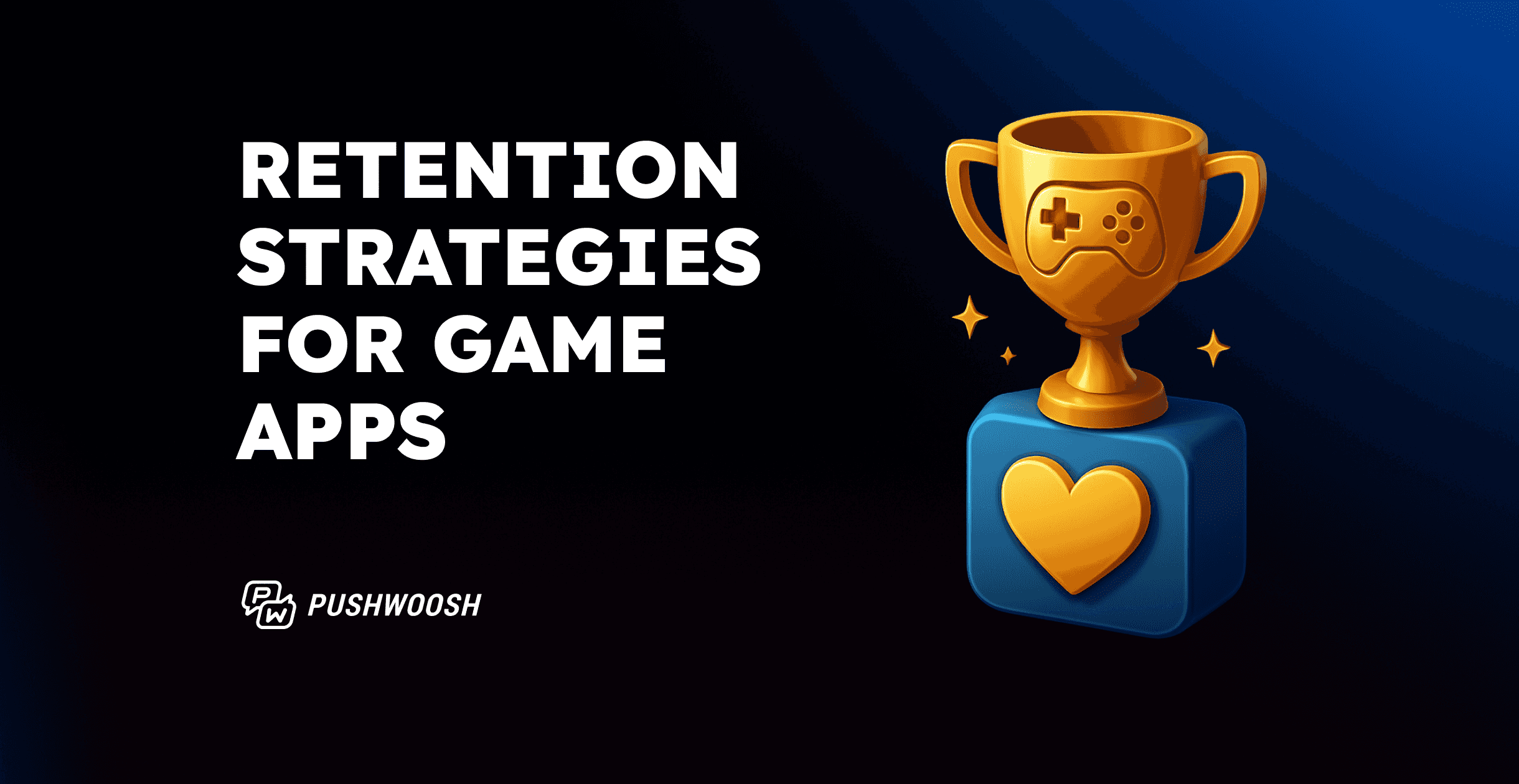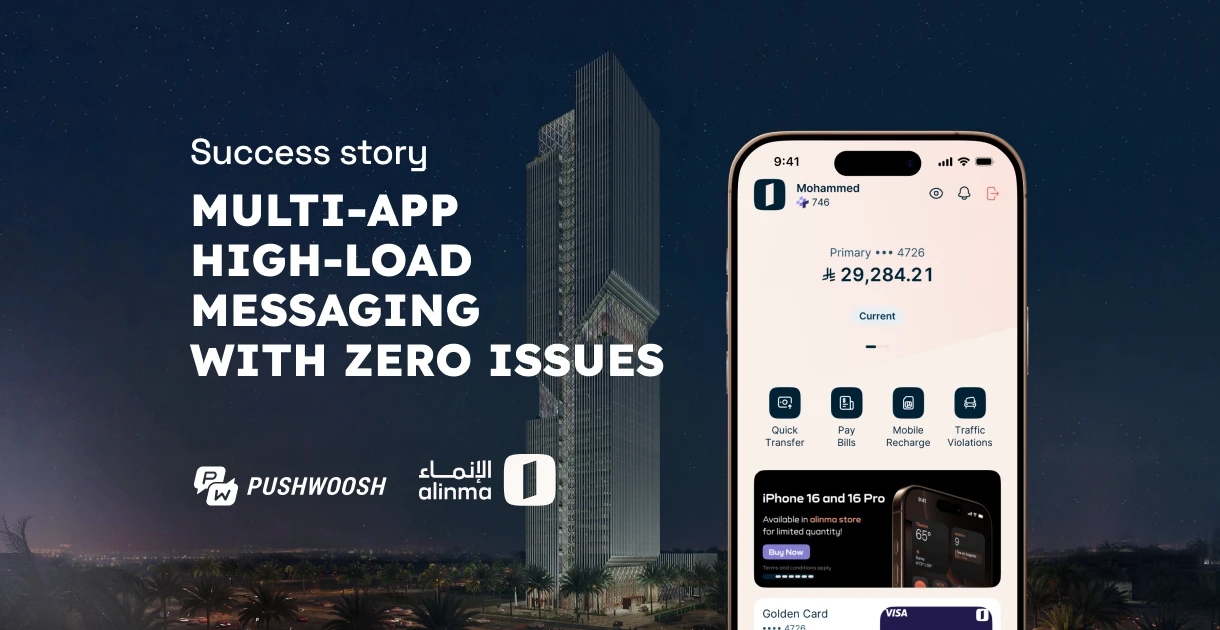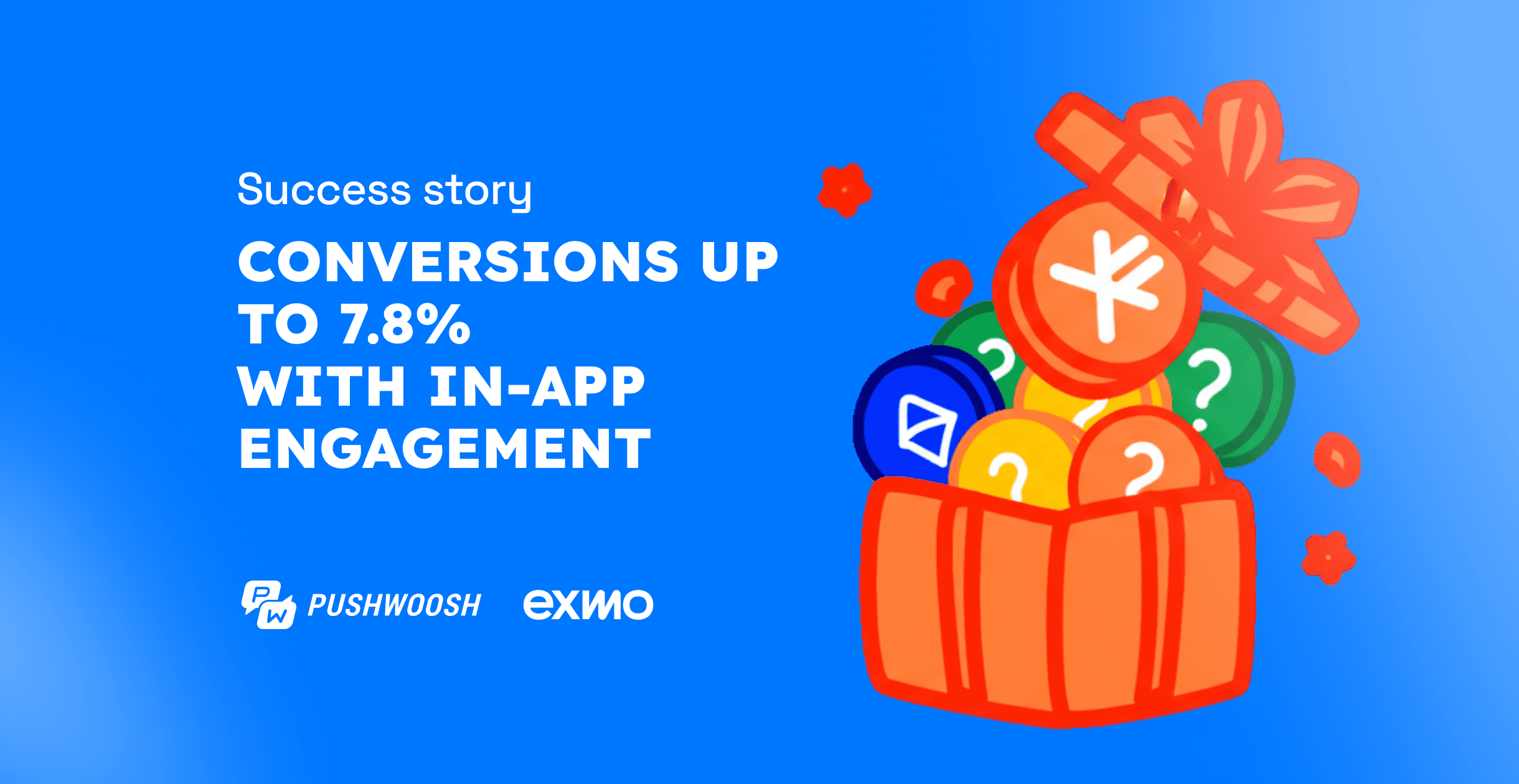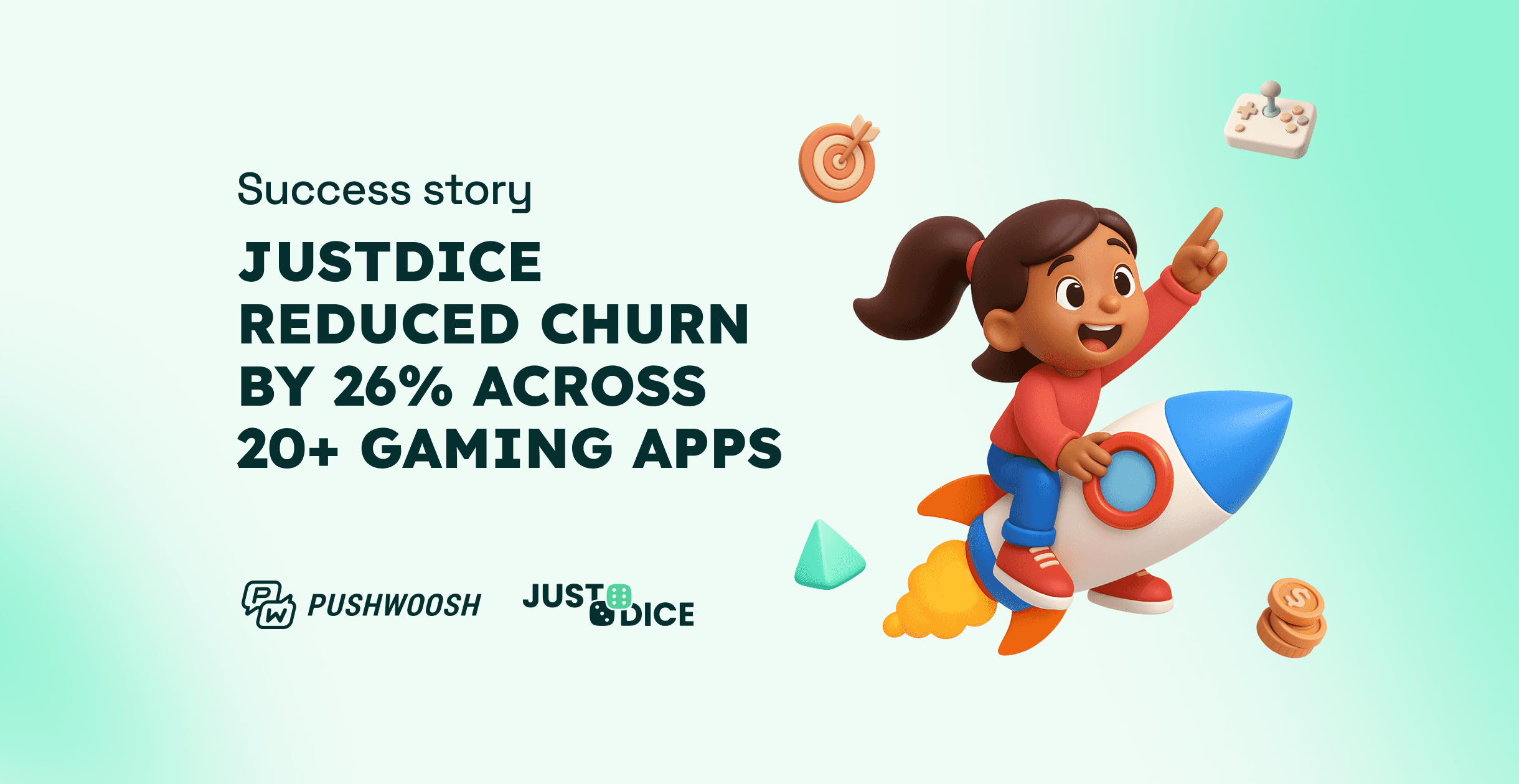Win the retention game: Proven strategies to keep players and boost revenue
Acquiring users is expensive — retaining them is priceless. If you know how to turn new users into active and loyal players, you’ll stay strong and grow in the crowded mobile gaming market. If you don’t know how to do it — yet — you’ve landed in the right place.
We’ll uncover how three successful game app publishers — justDice, Bladestorm, and Beach Bum — use lifecycle marketing to achieve higher user retention and sustainable app growth.
🏁 1. Act fast: Reduce early churn in the first minutes
Challenge:
New users often churn before they even finish onboarding.
Solution:
justDice launched an early churn prevention campaign triggered minutes after the app install. If a player didn’t complete the setup, they received an automated push reminder to finish onboarding and claim a welcome bonus.

🏆 Results:
26% reduction in early churn
10.7% conversion rate at the end of the onboarding campaign
✍️ Tip:
Don’t wait days to re-engage. Act within the first minutes to keep users from slipping away.
Improve onboarding to show value quickly, teach the game interface, and reduce Day 1 & Day 7 churn.
📅 2. Build habits with high-value daily messaging
Challenge:
Retention doesn’t grow through occasional promotions alone; it’s built on daily habits. With countless distractions out there, how does your game stay top of mind?
Solution:
Bladestorm sent out daily and weekly offers through automated push notifications. The regular cadence of communication kept users informed and engaged with current bonuses and opportunities.

🏆 Results:
Users didn’t just tolerate daily messages — they embraced them:
- Push notifications’ CTRs soared up to 28.21%, achieving an average of 5.6%.
For comparison, the typical CTR benchmark for mobile games ranges from just 0.46% to 1.05%. - iOS opt-in rate of 97.9% — impressive, considering that the opt-in benchmark for gaming apps doesn’t exceed 74.68%.
This proved that users valued those messages.
Even more importantly, app retention peaked:
- 16.62% increase in MAU in just eight months
✍️ Tips:
- Get more players to opt in by emphasizing that exclusive, limited-time offers are only available via push notifications.
- Mix daily offers with weekly or monthly updates to keep both DAU and MAU strong.
- For long-term engagement and retention, provide value (bonuses, content, and features) rather than just discounts.
🎯 3. Re-activate dormant users & engage active players separately
Challenge:
A single retention campaign won’t do if you need to re-engage a diverse audience — from dormant players to power users — across multiple game apps.
Solution:
Beach Bum grouped its communications into specific retention and reactivation campaigns targeting users based on their activity levels.
Personalized messages arrived in users’ local languages, used custom notification sounds to stand out, and included enticing, tailored offers.

🏆 Results:
- DAU, MAU, and push subscribers all tripled across multiple apps.
✍️ Tip:
Segment game app users by activity (new, dormant, VIP) and design separate flows to re-engage each group.
Contextual relevance can do wonders for your game app’s engagement and retention.
Take justDice, for example: they sent push notifications triggered by in-app events — like when a bonus became available — and achieved CTRs of up to 14.14%. This, ultimately, helped cut user churn by 26%.
Even lightweight personalization makes a difference: Bladestorm segmented users only by language, and their localized pushes reached CTRs as high as 28.21%.
💰 4. Monetize your retained audience
Ultimately, a retention strategy must prove its worth to the bottom line. Whether you monetize your app through advertising, in-app purchases, or rewarded offers, lifecycle messaging can directly drive revenue.
Challenge #1:
Extract more value from existing players when user acquisition costs rise and a pool of new users shrinks.
Solution:
Bladestorm utilized targeted push notifications to guide users toward revenue-generating actions, such as opening offerwalls to complete partner offers.

🏆 Results:
✅ +4.58% increase in ARPU directly attributed to push-triggered Offerwall opens — achieved in just eight months
When you monetize your game app with offerwalls, the tricky part is that offers are there for a very limited amount of time. You have to attract as many users as possible to it — as quickly as possible. Pushwoosh has allowed us do that.
Challenge #2:
Keep engagement consistently high in a rewarded gaming app, where the publisher’s revenue is directly tied to user activity.
Solution:
justDice launched a series of lifecycle campaigns tailored to user actions. In your game, these could be:
- Daily streak reminders to encourage return visits;
- Event-triggered pushes (e.g., “2x boost available!”) nudging users to act quickly.
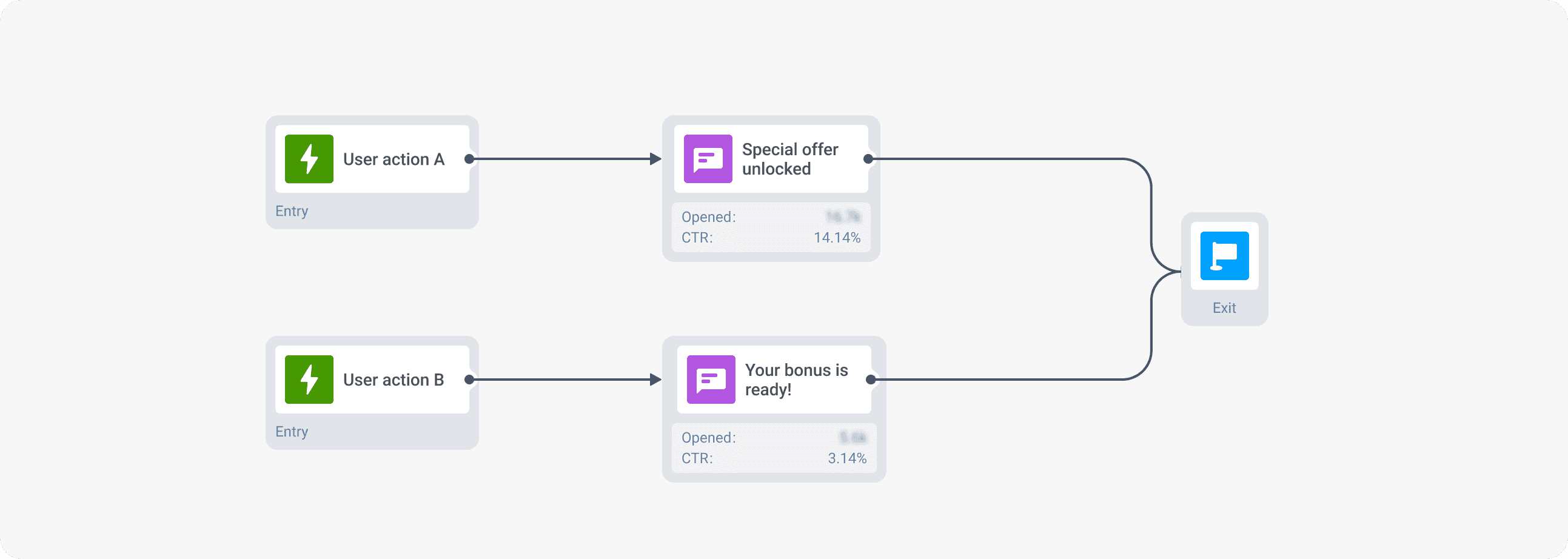
They also cloned top-performing campaigns to multiple apps to scale results without rebuilding flows.
🏆 Results:
✅ Push CTRs up to 14.14%
✅ Increased percentage of monetized users
✅ Faster replication amplified revenue impact
✍️ Tip:
Tie retention messaging to high-value in-app events and offers to turn user engagement into a reliable revenue stream.
💎 5. Reward users throughout the lifecycle
✍️ Expert tips:
Loyalty programs can have a real impact on both retention and monetization, especially when they’re tailored to the different stages of the player lifecycle.
For example, during onboarding, using simple mechanics like welcome bonuses or early progress points can help players experience an immediate value and even form habits from the beginning.
Once users have become engaged, tiered reward systems can be very effective, as each milestone unlocks valuable perks, building anticipation and encouraging continued play.
To re-target users, rewards like time-limited offers or exclusive items can reactivate interest and bring churned players back into the game.
By applying the right tools at the right stage (something Gamelight makes possible), you can keep players coming back as well as increase monetization by keeping them invested in both the experience and the in-game economy.
Retention strategy checklist: Here is how you win
Successful game apps don’t gamble on retention— they steer it with lifecycle messaging:
Act quickly to reduce early churn
Keep users engaged daily with recurring messages
Segment users and personalize communications
Reactivate dormant users strategically
Tie retention messaging to revenue-driving in-app actions
Test, measure, and scale what works
By following these proven lifecycle messaging tactics, the leading mobile games boost DAU, MAU, aтd ARPU, turning retention into a scalable growth engine. And you can do it too! 💪
FAQ
1. What is user retention in mobile games?
User retention is the practice of keeping players active and engaged after they install your app. It’s a crucial part of any sustainable growth strategy because it is often more cost-effective than constantly acquiring new users, especially in competitive markets like mobile gaming, where acquisition costs are high.
2. When should I start retention campaigns?
Right after install. Early engagement is key — apps like justDice launched churn-prevention flows minutes after install, reducing early churn by 26%.
3. How can push notifications help improve retention in a game app?
Timely, personalized push notifications can bring users back when they’re most at risk of dropping off — e.g., reminding them of daily bonuses, incomplete onboarding, or special events.
Combined with in-app messaging and email, push notifications can increase user retention rates even more effectively.
4. How does retention impact revenue?
Higher retention means more active users, which directly increases in-app purchases, ad revenue, and ARPU.
For example, Bladestorm grew MAU by 16.62% and ARPU by 4.58% just by guiding retained users to revenue-driving actions.




